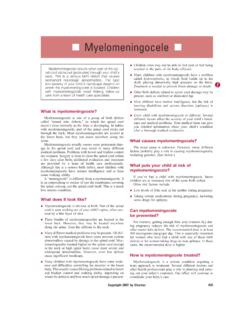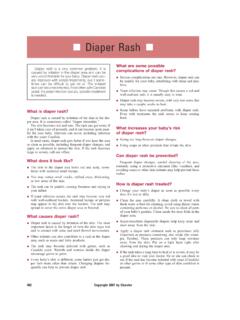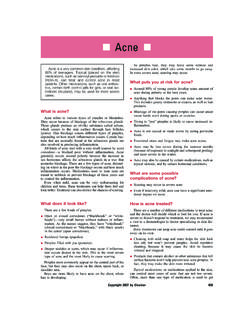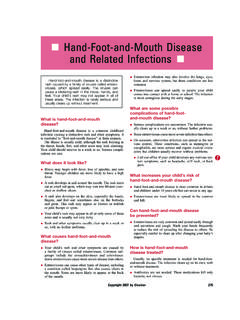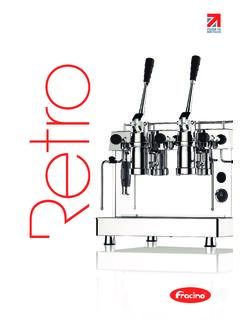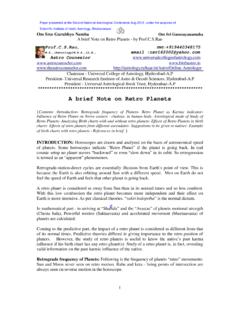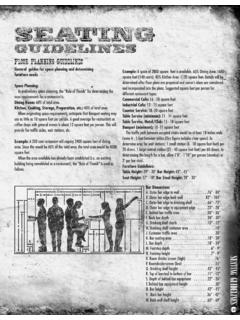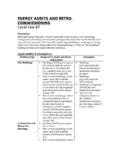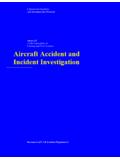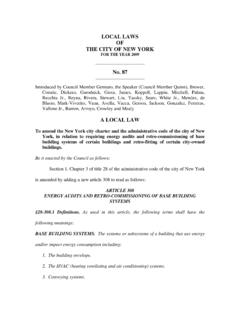Transcription of Peritonsillar and Retropharyngeal Abscesses n
1 NPeritonsillar and RetropharyngealAbscessesnA Peritonsillar abscess is a localized infection(pus) involving the tonsils. Retropharyngeal ab-scesses occur in the back of the throat. Althoughthese two infections have some differing symp-toms, both usually cause fever, sore throat, and dif-ficulty eating. Treatment in the hospital is usuallyneeded, including intravenous (IV) antibiotics andsometimes are Peritonsillar andretropharyngeal Abscesses ?An abscess is a localized area of infection with pus, usu-ally caused by bacteria. Abscesses can develop in lymphnodes behind the throat ( Retropharyngeal ) or in the areaof the tonsils ( Peritonsillar ).
2 The tonsils are lymph tissuelocated at the back of the mouth; they can easily be seenwhen enlarged. Like the lymph nodes, the tonsils containcells that play a role in the immune bacteria causing Peritonsillar Abscesses include strep (group A streptococci) and other bacteria from themouth. Retropharyngeal Abscesses are caused by the samebacteria as well as by staph (Staphylococcus) Abscesses usually start from a throat infection,like strep throat. Retropharyngeal Abscesses may begin fromthroat infections or sometimes from dental infections ortrauma (such as a laceration or cut in the throat).What do they look like? Peritonsillar abscessis more common in older childrenand teens.
3 Symptoms include: Sore throat. Fever. Difficulty eating. Difficulty opening the mouth very wide because of pain. The doctor may see that one tonsil is much larger thanthe other. Enlarged glands in the neck. Muffled abscessis more common in youngerchildren, usually less than 3 or 4 years old. Symptomsinclude: Many of the same symptoms as Peritonsillar abscess(fever, sore throat, difficulty eating). Drooling child refuses to move the neck. Sometimes swelling in the back of the throat causesdifficulty breathing. Call our office!!What are some possiblecomplications of Peritonsillar andretropharyngeal abscess? The main complication of both infections, especially ret-ropharyngeal abscess, is blockage of the airway, causingdifficulty breathing.
4 There is also a risk that the infection will spread to otherareas are Peritonsillar andretropharyngeal abscessdiagnosed and treated?Diagnosis. The doctor will examine your child s throat to see if thereare any obvious areas of swelling or redness. The diagno-sis is suspected from the symptoms and medical exami-nation. Especially for Retropharyngeal abscess, a specialkind of x-ray test called a CT scan is often needed tobe sure of the Antibioticswill be given to kill the bacteria causing theinfection. Your child usually needs to go to the hospitalso that antibiotics can be given through a vein (intrave-nous, IV). Antibiotic treatment will continue for at least severaldays, until your child is feeling better.
5 After the IVantibiotics are stopped, your child will receive oralantibiotics. Incision and drainagemay be needed to drain infectedmaterial. This is a relatively simple operation in whicha small cut (incision) is made in the abscess to allowremoval of the pus and other infected material (drainage).This is done if your child is experiencing difficultybreathing or is not getting better with antibiotics. A sample of the infected material will be tested(cultured) to identify the exact bacteria present. Thisis important to make sure your child is receivingeffective antibiotic 2007 by Elsevier450 For Peritonsillar Abscesses , a simpler procedurecalled needle aspiration may be performed.
6 A needleis used to remove as much fluid as possible from theabscess. Needle aspiration can often be done using local anes-thesia only. General anesthesia may be needed inyounger children. If the infection doesn t improve after needle aspiration,incision and drainage may still be needed. In somecases, surgery to remove the tonsils (tonsillectomy)may be Make sure your child finishes his or her antibiotic pre-scription completely! This is very important in order toeliminate the bacteria causing the infection. Don t stopgiving antibiotics just because your child is feeling better. Your child will receive follow-up care to make sure theinfection doesn t should I call your office?
7 Call our office if symptoms return (fever, sore throat,etc.) soon after and Retropharyngeal Abscessesn451 Copyright 2007 by Elsevier

